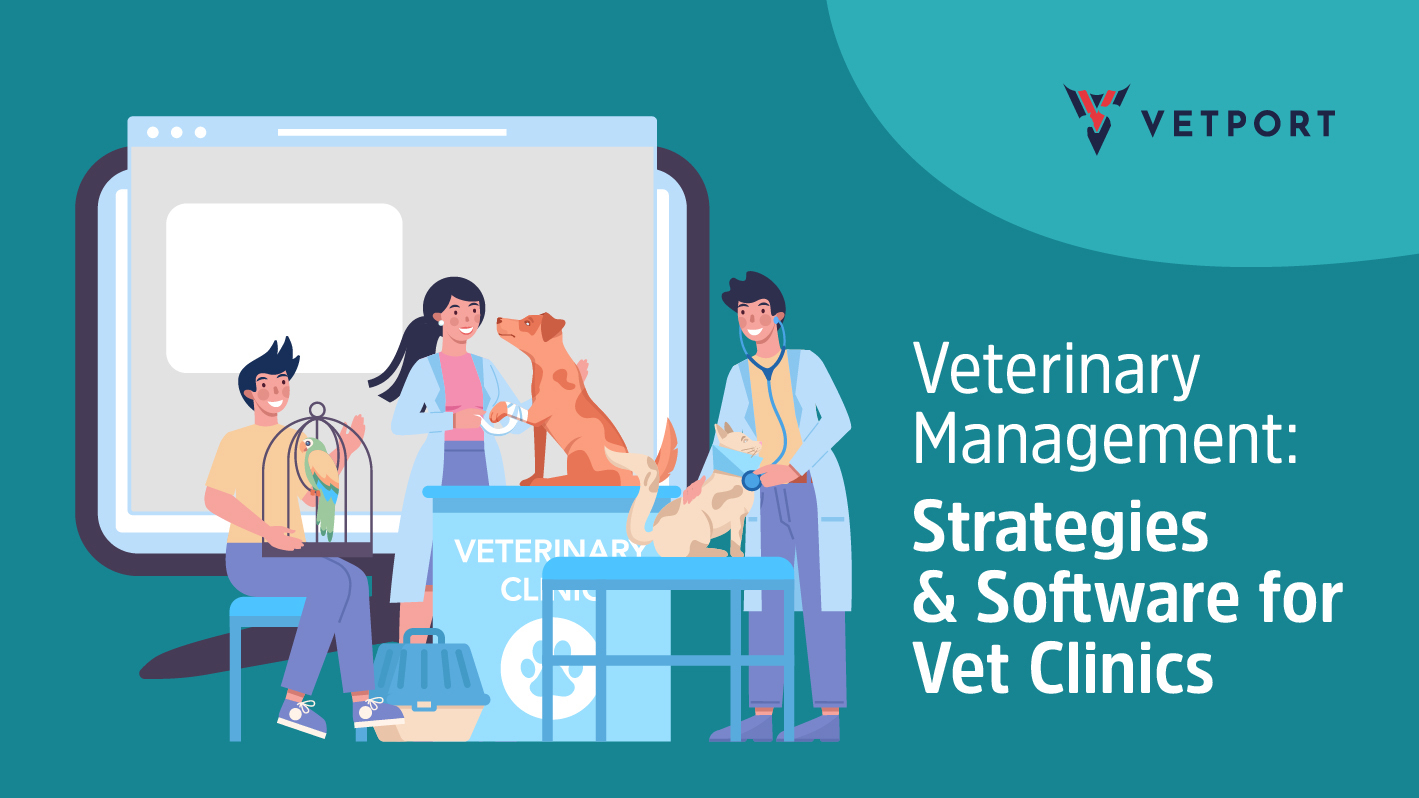
Veterinary Management: Strategies & Software for Vet Clinics
Veterinary management goes far beyond treating animals—it’s the foundation of every successful veterinary practice. It includes organizing schedules, coordinating staff, ensuring compliance, managing finances, and above all, delivering a smooth client experience. As pet ownership continues to rise and client expectations grow, clinics must adopt modern tools and strategic frameworks to keep up.
This detailed guide is designed to help veterinary professionals understand the key components of effective management and how solutions like VETport can help streamline operations and elevate the standard of care.
What Is Veterinary Management?
Veterinary management refers to the day-to-day administration and operational oversight of a veterinary practice. This includes:
- Staff Coordination: Scheduling shifts, managing workload, and conducting performance reviews
- Client Communication: Appointment reminders, follow-ups, and consistent messaging
- Medical Records Handling: Secure, organized storage of patient histories
- Inventory Management: Tracking supplies, medications, and equipment
- Financial Operations: Billing, payroll, budgeting, and reporting
Efficient veterinary management ensures your clinic is productive, compliant, and trusted by pet owners.
Why It Matters More Than Ever
Clients today expect a seamless, tech-enabled experience—from online booking to real-time updates. Internally, clinics face mounting pressure to improve staff retention, reduce burnout, and stay compliant with industry standards.
An organized and strategically managed clinic not only enhances patient outcomes but also ensures sustainable growth. Whether you’re a single-doctor clinic or a multi-location hospital, veterinary management is your key to long-term success.
Key Challenges Veterinary Clinics Face
-
Appointment No-Shows
Unattended appointments waste valuable time and reduce profitability. -
Unstructured Communication
Inconsistent or delayed messaging lowers client satisfaction and trust. -
Inventory Loss
Missing supplies due to lack of oversight can disrupt treatments and inflate costs. -
Inefficient Record-Keeping
Manual records are time-consuming and increase the risk of errors or compliance issues. -
Staff Overload and Burnout
Without structured workflows, teams get overwhelmed, resulting in poor service.
5 Core Pillars of Successful Veterinary Management
1. Team and Staff Management
- Define roles and responsibilities clearly
- Implement shift planning and coverage tracking
- Offer regular upskilling and veterinary-specific training
2. Client Experience Excellence
- Use automated appointment systems
- Enable online medical history access for pet owners
- Provide timely follow-ups and personalized care recommendations
3. Financial Oversight
- Digitize billing and integrate payment gateways
- Track outstanding balances and recurring expenses
- Analyze profitability by service or department
4. Inventory and Supplies Management
- Automate reorder alerts
- Track batch numbers and expiry dates for medications
- Maintain supplier databases for faster procurement
5. Regulatory Compliance & Record Keeping
- Digitize consent forms, insurance documents, and treatment notes
- Ensure all patient histories are securely stored and easy to retrieve
- Generate compliance reports for audits and inspections
How VETport Powers Smarter Veterinary Management
- All-in-One Dashboard: Manage appointments, staff, billing, and reports from a customizable interface.
- Smart Reminders: Reduce no-shows with SMS, email, and app notifications.
- Digital Records: Store and access patient histories in seconds, from anywhere.
- Inventory Sync: Real-time stock updates, usage tracking, and vendor integration.
- Performance Insights: Measure KPIs such as revenue, patient volume, and client retention.
No unnecessary tools. No complex setups. Just intuitive features designed for real clinic challenges.
Building Your Own Veterinary Management Strategy
- Define Practice Goals: Set monthly and yearly targets for appointments, revenue, and satisfaction ratings.
- Map Workflows: Document every clinic process and identify gaps or delays.
- Train the Team: Run refreshers on tools and encourage peer learning.
- Implement Smart Software: Choose a solution like VETport that adapts to your workflow.
- Monitor & Improve: Review reports, collect feedback, and iterate processes regularly.
FAQs
Q1: How does veterinary management software save
time?
By automating repetitive tasks, software can save 10–20
hours per staff member monthly.
Q2: Is VETport suitable for solo practices?
Yes! VETport is scalable and ideal for solo
veterinarians, startups, and multi-location clinics.
Q3: Can I migrate my existing data to VETport?
Absolutely. Our onboarding support ensures a smooth
transition from legacy systems.
Final Thoughts
Veterinary management isn’t just about keeping things running—it’s about building a system that supports great care, client trust, and sustainable growth. With the right tools and strategy, even the busiest clinics can find calm in the chaos.
VETport simplifies the process with an intuitive,
veterinary-specific platform built for real-world workflows.
Ready to transform your clinic? Schedule a
free demo
with VETport today.

